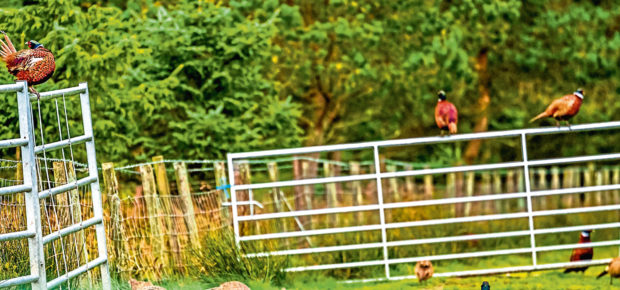At this time of year, I am often contacted by tenant farmers for advice about their landlord’s exercise of sporting rights over the let farm. This is often a cause of friction between landlord and tenant.
Agricultural leases will usually reserve the sporting rights over the let farm to the landlord. This is a perfectly standard arrangement and the exercise of the agricultural tenant’s rights and the landlord’s sporting rights over the land more often than not exist in reasonable harmony, each side respecting the interests of the other.
However, relationships can break down and it is usually because one side perceives the other as behaving unreasonably and not properly taking into account their rights. This is particularly so when the landlord, as they are entitled to do, has let out the sportings to a third party.
The personal relationship between landlord and tenant which perhaps in the past allowed a reasonable degree of compromise between the two can be absent when a third party seeks to maximise the commercial return from the sporting lease.
I often hear complaints from agricultural tenants about shooting parties disturbing livestock, causing damage to crops, leaving gates open and appearing unannounced to shoot.
Likewise, I often hear complaints about damage and nuisance from large numbers of pheasants which are reared on the landlord’s property but which then encroach on the let farm, causing damage to crops and often a severe nuisance through fouling.
What, if anything, can the tenant farmer do about it? There is a statutory right to claim payment for damage to crops because of game if it exceeds the sum of 12p per hectare.
However, in order to claim compensation, a notice in writing has to be given to the landlord as soon as practicable after the damage is first noticed. The landlord must be given a reasonable opportunity to inspect.
A second notice must then be given within six months of the first notice setting out the amount being claimed. Ultimately, the claim has to be raised in the Land Court if it cannot be agreed with the landlord.
An agricultural tenant may also have a claim for damages against his or her landlord if the quantity of game affecting the holding has been materially increased since the start of the lease.
This means that where a landlord chooses to develop, for example, pheasant shooting on a particular estate greatly beyond the extent of the shootings which existed when the lease was entered into, so affecting the agricultural tenant, the tenant may have a claim against the landlord for the damage which results over and above what might ordinarily have been expected at the outset of the lease.
The Tenant Farming Commissioner has produced a code of practice in respect of the exercise of sporting rights. The code points out that the tenant farmer and the party exercising sporting rights should each respect the right of the other party to enjoy their rights. They should each behave responsibly and with regard to the effect of their actions on the other party.
The code points out that good communications are the key to a harmonious relationship and that both sides should be willing to make the effort to establish and maintain a good and effective working relationship. The code suggests that a memorandum of understanding should be agreed providing for access arrangements and informing the tenant of planned shooting dates.
The code also recommends that where property owners are entering into new sporting leases, they include a clause obliging the sporting tenant to comply with the code.
Hamish Lean is a partner and head of rural property at Shepherd and Wedderburn.







